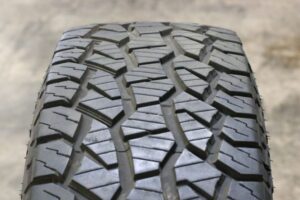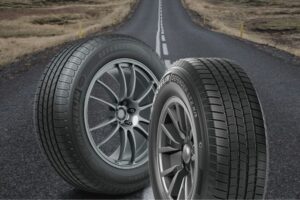Tesla has revolutionized the automobile industry with their electric cars, pioneering new technologies and designs that have changed the way we think about driving. One of the features that has caught the attention of Tesla enthusiasts is the steering wheel weight.
This device is designed to trick the Autopilot system into thinking that the driver’s hands are on the wheel, allowing them to enjoy a more hands-free driving experience.
The Tesla steering wheel weight is a small, detachable device that can be easily attached to the steering wheel of a Tesla vehicle. It is designed to provide enough weight to the wheel to keep it from detecting that the driver’s hands are not on it.
This allows the Autopilot system to remain engaged, even when the driver is not actively steering the car. While this may seem like a convenient feature, it has raised concerns about the safety of using such a device while driving.
Tesla has not officially endorsed the use of steering wheel weights, and some experts have warned that they could be dangerous.
The Autopilot system is designed to detect when the driver’s hands are not on the wheel and will issue warning messages if it detects that the driver is not paying attention to the road.
Using a steering wheel weight could potentially disable these warning messages, putting the driver and other road users at risk. Despite these concerns, the use of steering wheel weights remains a popular topic of discussion among Tesla enthusiasts.
Overview of Tesla Steering Wheel Design

Evolution of Tesla Steering Wheel
Tesla has been at the forefront of innovation in the automotive industry, and the design of their steering wheel is no exception. The first Tesla Model S, released in 2012, featured a traditional round steering wheel.
However, with the release of the new Model S and Model X in 2021, Tesla introduced a new yoke-style steering wheel. The yoke-style steering wheel is a radical departure from traditional steering wheels, as it features a rectangular shape with no top section.
Yoke vs Traditional Steering Wheels
The yoke-style steering wheel has been met with mixed reviews. Some drivers find it to be more sporty and futuristic, while others find it to be uncomfortable and difficult to use.
One of the main benefits of the yoke-style steering wheel is that it provides a clear view of the dashboard and the road ahead. However, it can be difficult to use when making sharp turns or navigating tight spaces.
Additionally, the lack of a top section can make it difficult to grip the wheel during emergency maneuvers.
On the other hand, traditional steering wheels are more comfortable and familiar to most drivers. They provide a secure grip and are easy to use in any situation.
They also provide a place to rest your hands when not actively steering. However, traditional steering wheels can be bulky and can obstruct the driver’s view of the dashboard.
Impact of Design on Driver Experience
The design of the steering wheel can have a significant impact on the driver’s experience. A well-designed steering wheel can make driving more comfortable and enjoyable, while a poorly designed steering wheel can be a distraction and a source of discomfort.
Tesla has always placed a strong emphasis on design and comfort, and the steering wheel is no exception.
Overall, the yoke-style steering wheel represents a bold departure from traditional steering wheel design. While it has its benefits, it may not be for everyone. Tesla will likely continue to innovate and refine their steering wheel design in the years to come.
Weight Specifications of Tesla Steering Wheels
Tesla steering wheels are known for their sleek design and advanced features. One important aspect of a steering wheel is its weight. In this section, we will explore the weight specifications of Tesla steering wheels, specifically for the Tesla Model 3.
Tesla Model 3 Steering Wheel Weight
The weight of the Tesla Model 3 steering wheel is approximately 1.8 kilograms or 4 pounds. This weight is designed to provide a comfortable and responsive driving experience. The weight of the steering wheel is an important factor to consider when choosing an aftermarket steering wheel weight.
Comparison with Other Tesla Models
The weight of the Tesla Model 3 steering wheel is similar to that of other Tesla models. For example, the Tesla Model S steering wheel weighs approximately 1.8 kilograms or 4 pounds, while the Tesla Model X steering wheel weighs approximately 2.3 kilograms or 5 pounds.
It is important to note that the weight of the steering wheel can affect the overall driving experience. A heavier steering wheel can provide a more stable and responsive feel, while a lighter steering wheel can provide a more agile and nimble feel.
In conclusion, the weight of the Tesla steering wheel is an important factor to consider when choosing an aftermarket steering wheel weight.
The weight of the Tesla Model 3 steering wheel is approximately 1.8 kilograms or 4 pounds, which is similar to other Tesla models. The weight of the steering wheel can affect the overall driving experience and should be chosen based on personal preference.
Functional Role of Steering Wheel Weight

Tesla steering wheel weights are devices that can be added to the steering wheel to improve the functionality of the vehicle. These weights can have a significant impact on the control, torque response, steering precision, and vehicle handling.
Control and Torque Response
The addition of a steering wheel weight can improve the control and torque response of the vehicle. The weight increases the amount of force required to turn the wheel, which can help the driver maintain a better grip on the wheel.
This can be especially beneficial when driving at high speeds or in difficult weather conditions.
Steering Precision and Vehicle Handling
Steering precision and vehicle handling are also improved with the addition of a steering wheel weight. The weight helps to stabilize the vehicle and reduce the amount of vibration felt in the steering wheel. This can lead to a smoother and more comfortable ride for the driver and passengers.
In summary, the functional role of a steering wheel weight is to improve the control, torque response, steering precision, and vehicle handling of a Tesla vehicle.
By adding a weight to the steering wheel, drivers can experience a more stable and comfortable ride, especially in challenging driving conditions.
Safety Implications of Steering Wheel Weight
The steering wheel weight of a Tesla vehicle has been a topic of concern for many drivers and safety experts. While some drivers prefer a heavier steering wheel to provide more control, others argue that a lighter steering wheel is more comfortable and less fatiguing.
However, there are safety implications associated with the use of steering wheel weights that drivers should be aware of.
Airbag Integration and Safety Systems
One of the main concerns regarding steering wheel weights is their effect on airbag integration and other safety systems.
According to TeslaTuneUp, the steering wheel weight can trick the safety system into thinking that the driver is behind the wheel, even if they are not. This can be dangerous in the event of an accident, as the airbag may not deploy properly or at all.
Weight and Driver Fatigue
Another concern with steering wheel weights is their effect on driver fatigue. A heavy steering wheel can cause the driver’s arms and hands to become fatigued more quickly, which can lead to a loss of control or an accident.
On the other hand, a light steering wheel can cause the driver to overcorrect and make sudden movements, which can also be dangerous.
To mitigate these concerns, Tesla allows drivers to adjust the steering wheel weight for optimal comfort and control, as mentioned in EV Seekers.
However, it is important for drivers to understand the potential safety implications of using steering wheel weights and to make informed decisions based on their own preferences and safety needs.
Tesla Autopilot and Steering Wheel Interaction
Tesla’s Autopilot system is designed to assist drivers in navigating the road. It uses a combination of sensors, cameras, and software to detect and respond to the environment around the vehicle.
One of the key components of the Autopilot system is the steering wheel, which is used to control the direction of the vehicle.
Steering Wheel Weight in Autopilot Mode
To use Autopilot, drivers are required to keep their hands on the steering wheel at all times. However, some drivers have found a way to bypass this requirement by using steering wheel weights.
These weights are designed to mimic the weight of a driver’s hand on the steering wheel, tricking the system into thinking that the driver is still in control of the vehicle.
While the use of steering wheel weights may be tempting for some drivers, it is important to note that it is not a safe or recommended practice. Tesla has specifically warned against the use of such devices, stating that they can compromise the safety of the driver and passengers.
Driver Monitoring and Alert Systems
In addition to the steering wheel, the Autopilot system also includes a driver monitoring and alert system. This system uses sensors and cameras to monitor the driver’s attention and alertness while using Autopilot.
If the system detects that the driver is not paying attention, it will issue a warning and eventually disengage the Autopilot system.
It is important for drivers to understand that the Autopilot system is not a substitute for attentive driving. While the system can provide assistance, it is still the responsibility of the driver to remain alert and aware of their surroundings at all times.
The use of steering wheel weights or any other device to bypass the system’s safety requirements can compromise the safety of everyone on the road.
Future of Steering in Autonomous Driving

The development of autonomous driving technology has brought about significant changes in the automotive industry. With the advent of full self-driving (FSD) technology, the role of the steering wheel in vehicles is undergoing a transformation.
This section will explore the future of steering in autonomous driving and the advancements in FSD technology.
Advancements in Full Self-Driving Technology
FSD technology is an advanced form of autonomous driving that allows a vehicle to operate without human intervention. Tesla is one of the leading companies in FSD technology, and its Autopilot system has been in use for several years.
The latest version of Autopilot includes features such as automatic lane-changing, auto-parking, and traffic light and stop sign recognition. Tesla’s FSD technology is expected to be fully released in the near future, and it will allow drivers to operate their vehicles without any input.
The Role of Steering Wheels in Self-Driving Vehicles
The steering wheel has been a fundamental part of vehicles since their inception, allowing drivers to control the direction of their vehicles. However, with the development of self-driving technology, the role of the steering wheel is changing.
In autonomous vehicles, the steering wheel is no longer necessary, as the vehicle can operate without human intervention. As a result, many automakers are designing vehicles without steering wheels.
Despite this, Tesla still includes a steering wheel in its FSD vehicles. The steering wheel is used as a backup in case of emergencies and to comply with current laws that require drivers to be in control of their vehicles.
However, as FSD technology continues to advance, it is likely that the role of the steering wheel will become obsolete.
In conclusion, the future of steering in autonomous driving is rapidly changing. With the advancements in FSD technology, the role of the steering wheel is becoming less important. As self-driving technology continues to develop, it is likely that the steering wheel will become obsolete.
In Closing
Tesla steering wheel weights have been a topic of controversy in the automotive industry. While some users have reported that they improve their driving experience, others have raised concerns about their safety, particularly in the event of an accident.
It is important to note that Tesla has not officially endorsed the use of steering wheel weights, and some users have reported that their use may void the vehicle’s warranty.
Additionally, third-party steering wheel weights have not been tested or certified by Tesla, and their use may pose a risk to the driver and passengers.
While some users may find the added weight to be beneficial, it is important to consider the potential risks and drawbacks before using a steering wheel weight.
Drivers should also be aware that the use of steering wheel weights may not be legal in all jurisdictions, and they should consult their local laws and regulations before using one.
In conclusion, while Tesla steering wheel weights may provide some benefits to certain users, their use should be approached with caution. Drivers should carefully consider the potential risks and drawbacks before using a steering wheel weight, and should always prioritize safety on the road.









